
DOC026.98.80186
Submerged Area/Velocity
Sensor and AV9000
08/2017, Edition 8
User Manual
Manuel d'utilisation
Manual del usuario
Manuale d'uso
Bedienungsanleitung
Manual do Usuário
Instrukcja obsługi
Kullanım Kılavuzu

English..............................................................................................................................3
Français......................................................................................................................... 22
Español.......................................................................................................................... 42
Italiano............................................................................................................................ 63
Deutsch.......................................................................................................................... 83
Português.................................................................................................................... 103
Polski............................................................................................................................ 123
Türkçe...........................................................................................................................143
2

Table of contents
Specifications on page 3 Operation on page 14
General information on page 4 Maintenance on page 15
Installation on page 7 Replacement parts and accessories on page 19
Specifications
Specifications are subject to change without notice.
Specifications—Submerged area velocity sensor
Performance will vary depending on channel size, channel shape and site conditions.
Velocity measurement
Method Doppler ultrasonic
Transducer type: Twin 1 MHz piezoelectric crystals
Typical minimum depth for
velocity
2 cm (0.8 in.)
Range -1.52 to 6.10 m/s (-5 to 20 ft/s)
Accuracy ± 2% of reading (in water with uniform velocity profile)
Level measurement
Method Pressure transducer with stainless steel diaphragm
Accuracy (static)
• ±0.16% full scale ±1.5% of reading at constant temp (±2.5 ºC)
• ±0.20% full scale ±1.75% of reading from 0 to 30 ºC (32 to 86 ºF)
• ±0.25% full scale ±2.1% of reading from 0 to 70 ºC (32 to 158 ºF)
Velocity-induced depth error Compensated based on flow velocity
Level range
• Standard: 0–3 m (0–10 ft)
• Extended: 0–9 m (0–30 ft)
Allowable level
• Standard: 10.5 m (34.5 ft)
• Extended: 31.5 m (103.5 ft)
General attributes
Air intake Atmospheric pressure reference is desiccant protected
Operating temperature 0 to 70 ºC (32 to 158 ºF)
Level compensated temperature
range
0 to 70 ºC (32 to 158 ºF)
Material Noryl
®
outer shell with epoxy potting within
Power consumption Less than or equal to 1.2 W @ 12 VDC
Cable Urethane sensor cable with air vent
Connector Hard anodized, satisfies Military Spec 5015
Cable lengths available
• Standard: 9, 15, 23 and 30.5 m (30, 50, 75, 100 ft)
• Custom: 30.75 m (101 ft) to 76 m (250 ft) maximum
English 3

Cable diameter 0.91 cm (0.36 in.)
Dimensions 2.3 cm H x 3.8 cm W x 13.5 cm L (0.9 in. H x 1.5 in. W x 5.31 in. L)
Compatible instruments Sigma 910, 920, 930, 930 T, 950, 900 Max samplers and the
AV9000 interface modules for the FL series flow loggers and AS950 samplers
Specifications—AV9000 interface module
Velocity measurement
Measurement method 1 MHz Doppler Ultrasound
Doppler Analysis Type Digital Spectral Analysis
-1.52 to 6.10 m/s (-5 to 20 ft/s)
± 2% of reading or 0.05 fps (uniform velocity profile, known salinity,
positive flow. Field performance is site specific.)
Doppler Accuracy ±1% of reading or 0.025 fps(with electronically simulated Doppler signal,
-25 to +25 fps equivalent velocity). Refer to Configure the sensor
on page 14.
Power requirements
Supply voltage 9-15 VDC
Maximum current <130 mA @ 12 VDC with submerged area velocity sensor
Energy per measurement <15 Joules (typical)
Operating temperature
-18 to 60 ºC (0 to 140 ºF) at 95% RH
Enclosure
Dimensions (W x H x D) AV9000: 13 x 17.5 x 5 cm (5.0 x 6.875 x 2.0 in.)
AV9000S: 12.01 x 14.27 x 6.86 cm (4.73 x 5.62 x 2.70 in.)
Environmental Rating NEMA 6P, IP68
Enclosure material PC/ABS
General information
In no event will the manufacturer be liable for direct, indirect, special, incidental or consequential
damages resulting from any defect or omission in this manual. The manufacturer reserves the right to
make changes in this manual and the products it describes at any time, without notice or obligation.
Revised editions are found on the manufacturer’s website.
Safety information
N O T I C E
The manufacturer is not responsible for any damages due to misapplication or misuse of this product including,
without limitation, direct, incidental and consequential damages, and disclaims such damages to the full extent
permitted under applicable law. The user is solely responsible to identify critical application risks and install
appropriate mechanisms to protect processes during a possible equipment malfunction.
Please read this entire manual before unpacking, setting up or operating this equipment. Pay
attention to all danger and caution statements. Failure to do so could result in serious injury to the
operator or damage to the equipment.
Make sure that the protection provided by this equipment is not impaired. Do not use or install this
equipment in any manner other than that specified in this manual.
4
English

Use of hazard information
D A N G E R
Indicates a potentially or imminently hazardous situation which, if not avoided, will result in death or serious injury.
W A R N I N G
Indicates a potentially or imminently hazardous situation which, if not avoided, could result in death or serious
injury.
C A U T I O N
Indicates a potentially hazardous situation that may result in minor or moderate injury.
N O T I C E
Indicates a situation which, if not avoided, may cause damage to the instrument. Information that requires special
emphasis.
Precautionary labels
Read all labels and tags attached to the instrument. Personal injury or damage to the instrument
could occur if not observed. A symbol on the instrument is referenced in the manual with a
precautionary statement.
This is the safety alert symbol. Obey all safety messages that follow this symbol to avoid potential
injury. If on the instrument, refer to the instruction manual for operation or safety information.
This symbol indicates the presence of devices sensitive to Electro-static Discharge (ESD) and
indicates that care must be taken to prevent damage with the equipment.
Electrical equipment marked with this symbol may not be disposed of in European domestic or public
disposal systems. Return old or end-of-life equipment to the manufacturer for disposal at no charge to
the user.
Confined space precautions
D A N G E R
Explosion hazard. Training in pre-entry testing, ventilation, entry procedures, evacuation/rescue
procedures and safety work practices is necessary before entering confined spaces.
The information that follows is supplied to help users understand the dangers and risks that are
associated with entry into confined spaces.
On April 15, 1993, OSHA's final ruling on CFR 1910.146, Permit Required Confined Spaces, became
law. This standard directly affects more than 250,000 industrial sites in the United States and was
created to protect the health and safety of workers in confined spaces.
Definition of a confined space:
A confined space is any location or enclosure that has (or has the immediate potential for) one or
more of the following conditions:
• An atmosphere with an oxygen concentration that is less than 19.5% or more than 23.5% and/or a
hydrogen sulfide (H
2
S) concentration that is more than 10 ppm.
• An atmosphere that can be flammable or explosive due to gases, vapors, mists, dusts or fibers.
• Toxic materials which upon contact or inhalation can cause injury, impairment of health or death.
English
5

Confined spaces are not designed for human occupancy. Confined spaces have a restricted entry
and contain known or potential hazards. Examples of confined spaces include manholes, stacks,
pipes, vats, switch vaults and other similar locations.
Standard safety procedures must always be obeyed before entry into confined spaces and/or
locations where hazardous gases, vapors, mists, dusts or fibers can be present. Before entry into a
confined space, find and read all procedures that are related to confined space entry.
Product overview
The submerged area velocity (AV) sensor is used with Sigma flow meters, FL series flow loggers and
AS950 samplers to measure the flow rate in open channels. Refer to Figure 1.
The sensor is available in oil-filled and non-oil-filled versions. The non-oil sensor is used for
reasonably clear sites, or sites where the pipe may become dry. The oil-filled sensor is used for sites
with high levels of biological growth, grit or silt.
Note: Do not use an oil-filled sensor in a pipe that may become dry.
The submerged AV sensor connects to a FL series flow logger or AS950 sampler through an
AV9000 interface module. Refer to Replacement parts and accessories on page 19 to identify the
applicable AV9000 model for the flow logger or sampler.
Note: The submerged AV sensor connects directly to Sigma flow meters. An AV9000 interface module is not
necessary.
Figure 1 Submerged area velocity sensor
1 Junction box (optional) 6 Lanyard
2 Desiccant hub 7 Submerged AV sensor
3 Desiccant container 8 Carabiner clip
4 Air reference tube 9 Sensor cable
5 Connector
Theory of operation
The sensor operates as an area velocity sensor and follows the continuity equation.
Flow rate = wetted area x average velocity
6
English

A pressure transducer in the sensor converts the pressure of the water to a level measurement. The
level measurement and the user-entered channel geometry are used to calculate the wetted area of
the flow stream.
The sensor also contains two ultrasonic transducers: one is a transmitter and the other is a receiver.
A 1 MHz signal is transmitted and reflected off of particles in the flow stream. The reflected signal is
received and its frequency is offset by the Doppler shift proportional to the velocity of the particles in
the flow stream. The flow logger converts the doppler shift in the returned ultrasound signals to a
velocity measurement.
Product components
Figure 2 shows the items in the shipment package. Contact the manufacturer if any components are
damaged or missing.
Figure 2 Product components
1 Submerged AV sensor 3 Junction box
2 Submerged AV sensor with junction box 4 Mounting screws (6x)
Installation
Installation guidelines
D A N G E R
Explosion Hazard. The non-IS AV sensors (770xx-xxx P/Ns) are not rated for use in classified Hazardous
Locations. For classified Hazardous Locations, use IS AV sensors (880xx-xxx PNs) installed per the control
drawings in 911/940 IS Blind Flow Meter manuals.
D A N G E R
Potential confined space hazards. Only qualified personnel should conduct the tasks described in this section of
the manual.
• Do not install more than one sensor in pipes with a diameter of less than 61 cm (24 inches).
Multiple sensors in smaller pipes can create turbulent or accelerated flows near the sensors, which
may cause inaccurate measurements.
• Mount the sensor as close as possible to the bottom of the pipe invert. This will give the most
accurate low-velocity-level measurements.
• Do not monitor flows in the manhole invert. The best location for the sensor is 3 to 5 times the
sewer diameter/height upstream of the invert.
• Put monitoring sites as far from inflow junctions as possible to avoid interference caused by
combined flows.
English
7

• Objects such as rocks, pipe joints, or valve stems create turbulence and generate high-speed
flows near the object. Make sure the area 2 to 4 pipe diameters in front of the sensor installation is
clear of obstructions. Best accuracy is obtained when there are no flow disruptions within 5 to
10 pipe diameters.
• Do not use sites with low-velocity flows that create silt buildup in the invert or channel. Buildup of
silt near the sensor can inhibit the Doppler signal and cause inaccurate sensor readings and depth
measurements.
• Do not use sites with deep rapid flows where sensor installation would be difficult or dangerous.
• Do not use sites with high-velocity, low-depth flows. Splash-over and excessive turbulence around
the sensor can cause inaccurate data.
Interference
The AV9000 interface module includes a sensitive radio-frequency receiver capable of the detecting
very small signals. When connected to a flow logger or sampler communications or auxiliary power
ports, some line-powered equipment can add electrical noise that interferes with Doppler velocity
measurements. Interference with measurements is uncommon in typical sites.
The AV9000 is most sensitive to noise falling within its Doppler analysis span of 1 MHz ± 13.3 kHz.
Noise at other frequencies typically does not cause interference.
Some laptop computers can cause interference problems when operated from external AC power
adapters. If such a device has an effect on the measurements, operate the laptop computer with
batteries or disconnect the cable between the laptop computer and the flow logger or sampler.
Install the AV9000 interface module
The submerged AV sensor connects to a FL series flow logger or AS950 sampler through an
AV9000 interface module. Refer to Replacement parts and accessories on page 19 to identify the
applicable AV9000 interface module for the flow logger or sampler.
Note: The submerged AV sensor connects directly to Sigma flow meters. An AV9000 interface module is not
necessary.
1. Install the AV9000 interface module. Refer to the AV9000 documentation for instructions.
2. Connect the sensor cable to the AV9000 interface module. Refer to the AV9000 documentation
for instructions.
3. Connect the AV9000 cable to a sensor port (or terminal) on the flow logger or sampler. Refer to
the flow logger or sampler documentation for instructions.
Attach the desiccant hub
Attach the desiccant hub to the flow logger or sampler to give strain relief to the sensor cable and the
connector. Refer to Figure 3 to Figure 5.
For the best performance, make sure to install the desiccant container vertically with the end cap
pointed down. Refer to Figure 3 to Figure 5.
8
English

Figure 3 Attach the desiccant hub—FL900 flow logger
1 End cap
Figure 4 Attach the desiccant hub—FL1500 flow logger
1 AV9000S with bare-wire connection 3 End cap
2 Accessories mounting plate
English 9

Figure 5 Attach the desiccant hub—AS950 portable sampler
1 End cap
Zero level calibration
If one or more of the statements that follow are correct, do a zero level calibration before the sensor
is installed.
• The installation location is a dry channel.
• It is not possible to get an accurate level in the flow because the level changes too rapidly.
• It is not possible to get an accurate level in the flow because of physical hazards.
Note: The sensor is factory-calibrated for the specified range and temperature.
Zero level calibration (FL series flow logger or sampler)
To do a zero level calibration with an FL900 flow logger, do a zero level calibration (zero calibration
in air) with the FSDATA Desktop Setup Wizard. Refer to the FSDATA Desktop documentation for
instructions. As an alternative, do a manual zero level calibration (zero calibration in air) with
FSDATA Desktop.
To do a zero level calibration with the FL1500 flow logger or sampler, refer to the FL1500 flow logger
or sampler documentation for instructions. As an alternative, do a zero level calibration with the
FSDATA Desktop Setup Wizard when the sensor is connected to an FL1500 flow logger.
Make sure that the sensor is out of the water and on a flat, level, horizontal surface.
Note: If the sensor is replaced, removed for maintenance or moved to another instrument, do a zero level
calibration.
10
English

Zero level calibration (Sigma 910 to 950 flow meters)
Do a zero level calibration as follows:
Note: If the sensor is replaced, removed for maintenance or moved to another instrument, do a zero level
calibration again.
1. Connect the flow meter to a computer with InSight software. Refer to the flow meter
documentation for instructions.
2. Start the InSight software on the computer.
3. Select Remote Programming.
4. From the Real Time Operations list, select the level sensor.
5. Remove the probe from the liquid and place the sensor flat on the tabletop or floor with the
sensor (the plate with holes) face down.
6. Push OK on the dialog box when complete.
Attach the sensor to the mounting band
Mounting bands have pre-drilled holes for direct mounting of the sensor to the band. Refer to the
steps and the figures to mount the sensor on the mounting band.
Note: If the sensor is the oil-filled type, make sure the sensor is filled with oil before mounting the sensor to the
mounting band. Refer to the Fill sensor oil section of this manual.
1. Attach the sensor to the spring ring (Figure 6). Mount the sensor so that the pressure transducer
extends past the edge of the ring.
2. Route the cable along the edge of the band (Figure 6).
3. Use nylon-wire ties to fasten the cable to the mounting band.
The cable should exit the tied area at or near the top of the pipe.
Note: If a large amount of silt exists in the bottom of the pipe, rotate the band until the sensor is out of the silt
(Figure 8 on page 14). Make sure the sensor remains below the minimum expected water level at all times.
Silt must be measured frequently but not disturbed.
English
11

Figure 6 Attach the sensor to the mounting band
1 Sensor 3 Sensor cable
2 Spring ring 4 Screws (2)
Place the sensor and mounting band in the pipe
1. Position the sensor in the flow. Figure 7 shows a standard upstream configuration, a standard
downstream configuration and a downstream sensor-reversed configuration.
To help determine the best configuration for the site, refer to Table 1. For more information on
configurations, refer to the appropriate logger manual.
2. Slide the mounting band inside the pipe as far as possible to prevent drawdown effects near the
end of the pipe.
3. Place the sensor at the bottom-most point in the channel. If excessive silt is present on the
bottom of the pipe, rotate the band in the pipe until the sensor is out of the silt. Refer to Figure 8.
12
English

Figure 7 Sensor positions
1 Upstream, facing flow 2 Downstream, facing flow 3 Downstream, reversed
Table 1 Selecting probe direction
Option Description
Upstream Recommended for most applications. The flow stream over the sensor should be as straight
as possible with no drops or turns near the measurement point.
Mount the sensor in the pipe with the beveled edge pointed toward the flow where the flow
stream enters the measurement area.
Downstream Use this option when the sensor is installed downstream of the measurement point (where
the flow stream exits the site). This option is useful when more than one flow stream enters a
site and the combined flow of all streams is measured at a single exit point. This option can
also be used if there are hydraulics preventing the sensor from being mounted in upstream
area.
Mount the sensor facing the flow.
Downstream
(reversed sensor)
Use this option when Option B will not work due to poor flow uniformity in the vault. The
maximum velocity read in this kind of installation is 5 fps when the AV9000 interface module
is not used. Mount the sensor in the downstream direction. The manufacturer recommends
verifying the velocity by profiling flow and using a velocity site multiplier, if required, for more
accurate reading.
Note: When the AV9000 interface module and submerged AV sensor are used with the FL900 logger, the
user has the option to select Reversed Sensor on the Sensor Port Set Up menu.
English 13

Figure 8 Avoiding silt when mounting the sensor
1 Water 3 Sensor
2 Pipe 4 Silt
Operation
For sensors connected to an FL900 flow logger, connect a computer with FSDATA Desktop software
to the flow logger to configure, calibrate and collect data from the sensors. Refer to the FSDATA
Desktop documentation to configure, calibrate and collect data from the sensor.
For sensors connected to an FL1500 flow logger, refer to the FL1500 flow logger documentation to
configure, calibrate and collect data from the sensors. As an alternative, connect a computer with
FSDATA Desktop software to the flow logger to configure, calibrate and collect data from the
sensors. Refer to the FSDATA Desktop documentation to configure, calibrate and collect data from
the sensor.
For sensors connected to an AS950 sampler, refer to the AS950 sampler documentation to
configure, calibrate and collect data from the sensors.
For sensors connected to a Sigma 910, 911, 920, 930 or 940 flow meter, connect a computer with
InSight software to the Sigma flow meter to configure, calibrate and collect data from the sensors.
Install the software
Make sure that the latest version of the FSDATA Desktop software or InSight software is installed on
the computer as applicable. Download the software from http://www.hachflow.com. Click Support,
then select Software Downloads.
Configure the sensor
For sensors connected to an FL900 flow logger, configure the sensors with the FSDATA Desktop
Setup Wizard. Refer to the FSDATA Desktop documentation for instructions.
14
English

For sensors connected to an FL1500 flow logger or AS950 sampler, refer to the FL1500 flow logger
or sampler documentation to configure the sensors. As an alternative, configure the sensors with the
FSDATA Desktop Setup Wizard when the sensors are connected to an FL1500 flow logger.
For sensors connected to a Sigma flow meter, do the steps in Level calibration for Sigma flow meters
on page 15.
Note: If a sensor is replaced, removed for maintenance or moved to another instrument, do a level calibration.
Level calibration for Sigma flow meters
1. With the sensor installed in the flow, monitor the Current Status with a PC using Insight software
or a flow meter display.
2. Physically measure the distance from the top of the pipe to the surface of the water. Refer to
Figure 9.
3. Subtract the number from step 2 from the pipe diameter. Refer to Figure 9.
The result is the water depth. Refer to Figure 9.
4. Use the Adjust Level function of the software to enter the physically-measured water depth.
Figure 9 Measure the water level
1 Water level
Maintenance
C A U T I O N
Multiple hazards. Only qualified personnel must conduct the tasks described in this section of the
document.
Clean the sensor
Clean the transducer port when:
• Unexpected increases or decreases in flow or level trends occur
• Level data are missing or incorrect but velocity data are valid
English
15

• Excessive silt deposits have built up between the transducer and the protective cover
Notes
• Do not touch the sensor transducer as this will cause damage and incorrect sensor operation.
• Use only approved cleaning solutions as listed in Table 2. Do not use any type of brush or rag to
clean the pressure transducer as this will cause damage and incorrect sensor operation. If there
are debris, spray the membrane with water and use a Q-tip to carefully remove the buildup.
• If the gasket is missing or damaged, install a new one. A damaged or missing gasket will cause
inaccurate readings.
• After cleaning the sensor, clean the gasket and protective cover before they are installed.
• After cleaning an oil-filled sensor, replenish the sensor oil.
• If a sensor must be taken out of service for an extended period, do not store the sensor on a dry
shelf. The manufacturer recommends that the sensor be stored with the sensor head in a bucket
of water to keep the oil debris from crusting in the pressure transducer canal.
To clean the sensor:
1. Soak the sensor in soapy water.
2. Remove the screws from the protective cover. Refer to Figure 10.
3. Remove the cover and gasket. Refer to Figure 10.
4. Carefully swirl the sensor in an appropriate cleaning solution to remove soil. Use a spray or
squeeze bottle to wash away heavier deposits.
5. Clean the gasket and cover.
6. Attach the gasket and cover. tighten the screws until the gasket starts to compress.
Figure 10 Sensor protective cover and gasket
1 Protective cover 2 Gasket 3 Sensor
16 English

Table 2 Acceptable and unacceptable cleaning solutions
Acceptable Do not use
Dish detergent and water Concentrated bleach
Window cleaner Kerosene
Isopropyl alcohol Gasoline
Dilute acids Aromatic hydrocarbons
Replace the desiccant
N O T I C E
Do not operate the sensor without desiccant beads or with green desiccant beads. Permanent damage to the
sensor can occur.
Immediately replace the desiccant when it changes to green. Refer to Figure 11.
Note: It is not necessary to remove the desiccant container from the desiccant hub to install new desiccant.
At step 5 of Figure 11, make sure that the O-ring is clean and has no dirt or debris. Examine the O-
ring for cracking, pits or sign of damage. Replace the O-ring if it has damage. Apply grease to dry or
new O-rings to make installation easier, to get a better seal and to increase the life of the O-ring.
For the best performance, make sure to install the desiccant container vertically with the end cap
pointed down. Refer to Attach the desiccant hub on page 8.
Note: When the beads just begin to turn green, it may be possible to rejuvenate them by heating. Remove the
beads from the canister and heat them at 100-180 ºC (212-350 ºF) until they turn orange. Do not heat the canister.
If the beads do not turn orange, they must be replaced with new desiccant.
Figure 11 Replace the desiccant
English 17

Replace the hydrophobic membrane
Replace the hydrophobic membrane when:
• Unexpected increases or decreases in level trends occur.
• Level data is missing or incorrect, but the velocity data is valid.
• The membrane is torn or has become saturated with water or grease.
Refer to the illustrated steps that follow to replace the membrane. At step 4, make sure that the
following occurs:
• The smooth side of the hydrophobic membrane is against the inner surface of the desiccant
container.
• The hydrophobic membrane bends up and goes fully into the thread until it is not seen.
• The hydrophobic membrane turns with the nipple when the nipple in the desiccant container turns.
If the membrane does not turn, it has damage. Start the procedure again with a new membrane.
For the best performance, make sure to install the desiccant container vertically with the end cap
pointed down. Refer to Attach the desiccant hub on page 8.
18 English

Replenish the sensor oil
Inspect the oil in the sensor for large air bubbles during customer-scheduled service duty cycles.
Large bubbles can reduce the anti-fouling properties of the oil. Small bubbles (< ¼-in. diameter) do
not affect the oil properties.
To replenish the sensor oil, refer to the documentation supplied with the silicone oil refill kit. Refer to
Replacement parts and accessories on page 19 for ordering information.
Replacement parts and accessories
W A R N I N G
Personal injury hazard. Use of non-approved parts may cause personal injury, damage to the
instrument or equipment malfunction. The replacement parts in this section are approved by the
manufacturer.
Note: Product and Article numbers may vary for some selling regions. Contact the appropriate distributor or refer to
the company website for contact information.
Replacement parts
Description Item number
Desiccant beads, bulk, 1.5 pound canister 8755500
Desiccant container 8542000
Hydrophobic membrane 3390
O-ring, dessicant container end cap, 1.176 ID x 0.070 OD 5252
Silicon oil, includes two 50-mL oil packs to refill 100 sensors 7724700
English 19

Description Item number
Silicon oil refill kit, includes:
dispensing tool, two 50-mL oil pack, instruction sheet and miscellaneous hardware
7724800
Desiccant hub
1
7722800
Accessories
Description Item number
AV9000 interface module, FL900 flow loggers 8531300
AV9000S interface module with bare-wire connection, FL1500 flow loggers 9504601
AV9000S interface module, AS950 portable samplers 9504600
Accessories mounting plate, FL1500 flow loggers 8309300
Custom cable, sensor to junction box, 0.3 to 30 m (1 to 99 ft) 77155-PRB
Custom cable, junction box to desiccant hub, 0.3 to 30 m (1 to 99 ft) 77155-HUB
Silicone potting gel kit for junction box 7725600
Gel fill, silicone potting
2
7729800
Gel fill, dispenser gun
3
7715300
Retrofit kit, change a sensor with a non-oil cover plate to a sensor with an oil-filled cover plate,
includes 7724800
7730000
Insertion tool, street-level installation of mounting rings 9574
Mounting ring for ∅ 15.24 cm (6 in.) pipe
4
1361
Mounting ring for ∅ 20.32 cm (8 in.) pipe
4
1362
Mounting ring for ∅ 25.40 cm (10 in.) pipe
4
1363
Mounting ring for ∅ 30.48 cm (12 in.) pipe
5
1364
Mounting ring for ∅ 38.10 cm (15 in.) pipe
5
1365
Mounting ring for ∅ 45.72 cm (18 in.) pipe
5
1366
Mounting ring for ∅ 50.8 to 53.34 cm (20 to 21 in.) pipe
5
1353
Mounting ring for ∅ 61 cm (24 in.) pipe
5
1370
Mounting band selection chart
Pipe diameter Mounting Band Selection
6
Item number
1473--6.25"
(15.85 cm) long,
adds 2" (5.08 cm) to
band diameter
Item number
1525--9.5"
(24.13 cm) long,
adds 3" (7.62 cm) to
band diameter
Item number
1759--19" (48.26 cm)
long, adds 6"
(15.24 cm) to band
diameter
Item number
1318--50.25" (127 cm)
long, adds 16"
(40.64 cm) to band
diameter
1
Use part number 77155-HUB to select the cable length after the desiccant hub.
2
Order three to fill one junction box.
3
Can also be used as a silicone oil fill gun
4
Requires item number 3263
5
The sensor attaches directly to band.
6
In addition to the band segments shown below, a complete mounting band assembly requires
one AV Sensor Mounting Clip (3263) and one Scissors Jack Assembly (3719).
20 English
La pagina si sta caricando...
La pagina si sta caricando...
La pagina si sta caricando...
La pagina si sta caricando...
La pagina si sta caricando...
La pagina si sta caricando...
La pagina si sta caricando...
La pagina si sta caricando...
La pagina si sta caricando...
La pagina si sta caricando...
La pagina si sta caricando...
La pagina si sta caricando...
La pagina si sta caricando...
La pagina si sta caricando...
La pagina si sta caricando...
La pagina si sta caricando...
La pagina si sta caricando...
La pagina si sta caricando...
La pagina si sta caricando...
La pagina si sta caricando...
La pagina si sta caricando...
La pagina si sta caricando...
La pagina si sta caricando...
La pagina si sta caricando...
La pagina si sta caricando...
La pagina si sta caricando...
La pagina si sta caricando...
La pagina si sta caricando...
La pagina si sta caricando...
La pagina si sta caricando...
La pagina si sta caricando...
La pagina si sta caricando...
La pagina si sta caricando...
La pagina si sta caricando...
La pagina si sta caricando...
La pagina si sta caricando...
La pagina si sta caricando...
La pagina si sta caricando...
La pagina si sta caricando...
La pagina si sta caricando...
La pagina si sta caricando...
La pagina si sta caricando...
La pagina si sta caricando...
La pagina si sta caricando...
La pagina si sta caricando...
La pagina si sta caricando...
La pagina si sta caricando...
La pagina si sta caricando...
La pagina si sta caricando...
La pagina si sta caricando...
La pagina si sta caricando...
La pagina si sta caricando...
La pagina si sta caricando...
La pagina si sta caricando...
La pagina si sta caricando...
La pagina si sta caricando...
La pagina si sta caricando...
La pagina si sta caricando...
La pagina si sta caricando...
La pagina si sta caricando...
La pagina si sta caricando...
La pagina si sta caricando...
La pagina si sta caricando...
La pagina si sta caricando...
La pagina si sta caricando...
La pagina si sta caricando...
La pagina si sta caricando...
La pagina si sta caricando...
La pagina si sta caricando...
La pagina si sta caricando...
La pagina si sta caricando...
La pagina si sta caricando...
La pagina si sta caricando...
La pagina si sta caricando...
La pagina si sta caricando...
La pagina si sta caricando...
La pagina si sta caricando...
La pagina si sta caricando...
La pagina si sta caricando...
La pagina si sta caricando...
La pagina si sta caricando...
La pagina si sta caricando...
La pagina si sta caricando...
La pagina si sta caricando...
La pagina si sta caricando...
La pagina si sta caricando...
La pagina si sta caricando...
La pagina si sta caricando...
La pagina si sta caricando...
La pagina si sta caricando...
La pagina si sta caricando...
La pagina si sta caricando...
La pagina si sta caricando...
La pagina si sta caricando...
La pagina si sta caricando...
La pagina si sta caricando...
La pagina si sta caricando...
La pagina si sta caricando...
La pagina si sta caricando...
La pagina si sta caricando...
La pagina si sta caricando...
La pagina si sta caricando...
La pagina si sta caricando...
La pagina si sta caricando...
La pagina si sta caricando...
La pagina si sta caricando...
La pagina si sta caricando...
La pagina si sta caricando...
La pagina si sta caricando...
La pagina si sta caricando...
La pagina si sta caricando...
La pagina si sta caricando...
La pagina si sta caricando...
La pagina si sta caricando...
La pagina si sta caricando...
La pagina si sta caricando...
La pagina si sta caricando...
La pagina si sta caricando...
La pagina si sta caricando...
La pagina si sta caricando...
La pagina si sta caricando...
La pagina si sta caricando...
La pagina si sta caricando...
La pagina si sta caricando...
La pagina si sta caricando...
La pagina si sta caricando...
La pagina si sta caricando...
La pagina si sta caricando...
La pagina si sta caricando...
La pagina si sta caricando...
La pagina si sta caricando...
La pagina si sta caricando...
La pagina si sta caricando...
La pagina si sta caricando...
La pagina si sta caricando...
La pagina si sta caricando...
La pagina si sta caricando...
La pagina si sta caricando...
La pagina si sta caricando...
La pagina si sta caricando...
La pagina si sta caricando...
La pagina si sta caricando...
La pagina si sta caricando...
La pagina si sta caricando...
-
 1
1
-
 2
2
-
 3
3
-
 4
4
-
 5
5
-
 6
6
-
 7
7
-
 8
8
-
 9
9
-
 10
10
-
 11
11
-
 12
12
-
 13
13
-
 14
14
-
 15
15
-
 16
16
-
 17
17
-
 18
18
-
 19
19
-
 20
20
-
 21
21
-
 22
22
-
 23
23
-
 24
24
-
 25
25
-
 26
26
-
 27
27
-
 28
28
-
 29
29
-
 30
30
-
 31
31
-
 32
32
-
 33
33
-
 34
34
-
 35
35
-
 36
36
-
 37
37
-
 38
38
-
 39
39
-
 40
40
-
 41
41
-
 42
42
-
 43
43
-
 44
44
-
 45
45
-
 46
46
-
 47
47
-
 48
48
-
 49
49
-
 50
50
-
 51
51
-
 52
52
-
 53
53
-
 54
54
-
 55
55
-
 56
56
-
 57
57
-
 58
58
-
 59
59
-
 60
60
-
 61
61
-
 62
62
-
 63
63
-
 64
64
-
 65
65
-
 66
66
-
 67
67
-
 68
68
-
 69
69
-
 70
70
-
 71
71
-
 72
72
-
 73
73
-
 74
74
-
 75
75
-
 76
76
-
 77
77
-
 78
78
-
 79
79
-
 80
80
-
 81
81
-
 82
82
-
 83
83
-
 84
84
-
 85
85
-
 86
86
-
 87
87
-
 88
88
-
 89
89
-
 90
90
-
 91
91
-
 92
92
-
 93
93
-
 94
94
-
 95
95
-
 96
96
-
 97
97
-
 98
98
-
 99
99
-
 100
100
-
 101
101
-
 102
102
-
 103
103
-
 104
104
-
 105
105
-
 106
106
-
 107
107
-
 108
108
-
 109
109
-
 110
110
-
 111
111
-
 112
112
-
 113
113
-
 114
114
-
 115
115
-
 116
116
-
 117
117
-
 118
118
-
 119
119
-
 120
120
-
 121
121
-
 122
122
-
 123
123
-
 124
124
-
 125
125
-
 126
126
-
 127
127
-
 128
128
-
 129
129
-
 130
130
-
 131
131
-
 132
132
-
 133
133
-
 134
134
-
 135
135
-
 136
136
-
 137
137
-
 138
138
-
 139
139
-
 140
140
-
 141
141
-
 142
142
-
 143
143
-
 144
144
-
 145
145
-
 146
146
-
 147
147
-
 148
148
-
 149
149
-
 150
150
-
 151
151
-
 152
152
-
 153
153
-
 154
154
-
 155
155
-
 156
156
-
 157
157
-
 158
158
-
 159
159
-
 160
160
-
 161
161
-
 162
162
-
 163
163
-
 164
164
Hach AV9000S Manuale utente
- Tipo
- Manuale utente
- Questo manuale è adatto anche per
in altre lingue
- English: Hach AV9000S User manual
- français: Hach AV9000S Manuel utilisateur
- español: Hach AV9000S Manual de usuario
- Deutsch: Hach AV9000S Benutzerhandbuch
- português: Hach AV9000S Manual do usuário
- polski: Hach AV9000S Instrukcja obsługi
- Türkçe: Hach AV9000S Kullanım kılavuzu
Documenti correlati
-
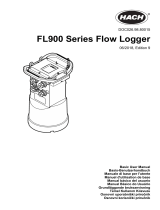 Hach FL902 Basic User Manual
Hach FL902 Basic User Manual
-
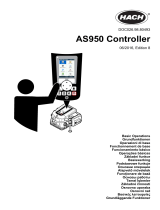 Hach AS950 Basic Operations
Hach AS950 Basic Operations
-
Hach Flo-Dar Basic User Manual
-
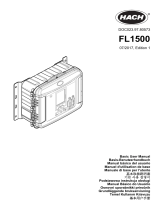 Hach FL1500 Basic User Manual
Hach FL1500 Basic User Manual
-
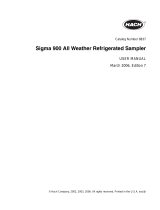 Hach SIGMA 900 Manuale utente
Hach SIGMA 900 Manuale utente
-
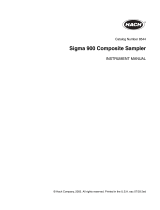 Hach 900 Manuale utente
Hach 900 Manuale utente
-
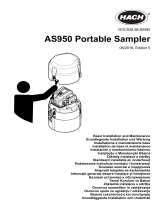 Hach AS950 AWRS Basic Installation And Maintenance
Hach AS950 AWRS Basic Installation And Maintenance
-
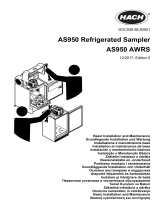 Hach AS950 Basic Installation And Maintenance
Hach AS950 Basic Installation And Maintenance
-
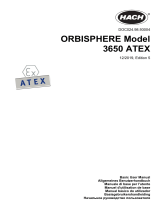 Hach ORBISPHERE 3650 Atex Basic User Manual
Hach ORBISPHERE 3650 Atex Basic User Manual
Altri documenti
-
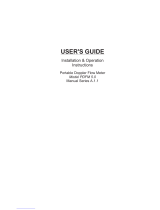 Greyline Instruments PDFM 5.0 Manuale utente
Greyline Instruments PDFM 5.0 Manuale utente
-
Dwyer Series DL6 Manuale utente
-
BABYMOOV Baby Doppler Connect Cocoon Life Manuale del proprietario
-
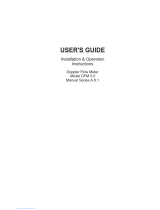 Greyline Instruments DFM 5.0 Manuale utente
Greyline Instruments DFM 5.0 Manuale utente
-
sauter TN-EE Manuale utente
-
Eurotherm 4101 Manuale del proprietario
-
STEINEL L 930 Manuale utente
-
Omega FTB696A and FTB697A Manuale del proprietario
-
Rosemount X-STREAM Enhanced XECLD Continuous Gas Analyzer Manuale del proprietario
-
Netatmo Exterieure intelligente avec sirène Manuale del proprietario













































































































































































